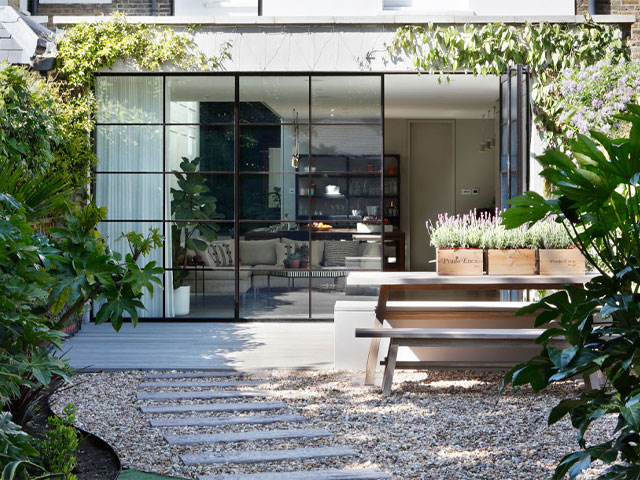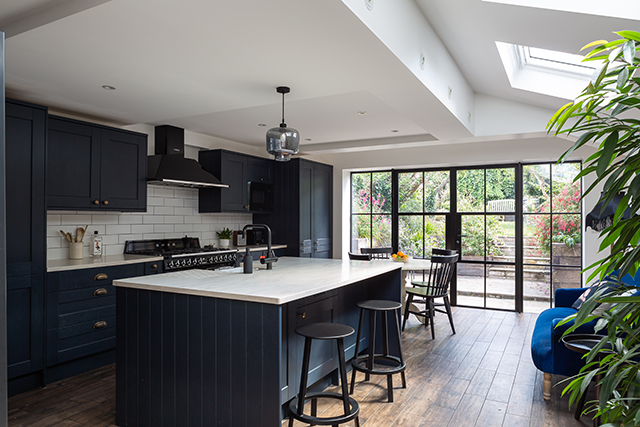5 rear extensions with stunning kitchens
Even a modest-sized rear extension can result in a more functional space
Rear extensions are all about providing much needed space and bringing in more light. Terraced homes or period semi-detached houses often have kitchens that are far too small for the needs of the household. Even a relatively modestly sized rear extension provides floorspace that will open up the kitchen to create a far more useable room.
These inspiring homes have all benefitted from rear extensions that have significantly increased the floor area to create a better layout.
A question of size
This home has a 12.8 square metre extension to the back. It provides room for a more spacious kitchen and better outdoor access. The design by MW Architects cost around £222,000 at the time of build.
This project required planning permission due to its size. However, it is possible to extend a detached house by up to 8m and a terraced or semi-detached property by 6m under permitted development. So, check with your local authority if you have any concerns before drawing up plans.

Photo: MW Architects
Planning permission for rear extensions
The extension shown below is the result of a successful planning application. Extending into a side passage, moving the back wall of the house into the garden, and dropping the floor level led to a stunning kitchen. The design, by MWAI, cost around £120,000. When applying for planning permission, appoint an architect or planning consultant who is aware of what is acceptable to your local authority. They are best placed to present your case.

Photo: MWAI
Lateral thinking
A side and rear extension brings light into this reconfigured terrace. By Rise Design Studio it cost around £300,000. Extending into the side return makes use of the awkward space between the house and the boundary. This option usually gives enough room to rework the layout and add a dining area. But you may need a party wall agreement with your neighbour.

Image: Rise Design Studio
Create definition
This side and rear timber extension cost around £93,500 and is designed by Francesco Pierazzi Architects. Using cladding such as natural or modified timber, stone, metal sheet or tiles, or composites is a great way to define a new addition to your home. This red cedar cladding is left untreated to allow for natural silvering.

Photo: FP Architects
Great proportions
Southwark Council gave planning permission for this timber-framed flat and pitched roof design by Plus Rooms. The cost of the extension was around £68,000. This wraparound design combines a rear and side addition to create an L-shaped space that encircles the home. Be aware that wraparound designs always require planning permission.

Image: Plus Rooms
Planning your kitchen extension
Advice on getting things right from James and Robbie Bernard, directors of design-build company Plus Rooms:
- There are two main routes to building a kitchen extension. Employing a design-and-build company to prepare plans and undertake all the works, or hiring an architect to draw up plans from which you can then obtain construction quotes. Beware of quotes that lack detail as this leaves scope for unexpected costs and future disagreements.
- A design-and-build company should provide full project costings. An architect will provide a cost for the design work – so make sure you have a clear understanding of the likely build costs upfront.
- Before signing off plans for submission to the local authority, pay attention to internal heights and structural elements, which are not always clear on plan, but have a significant impact on the final space.
- Works completed under PD may not need approval, but a Certificate of Lawfulness will give peace of mind and avoid costly mistakes.
- It takes eight weeks to determine a planning or PD application, so use this time to deal with things like party wall agreements, soil, tree and drainage surveys.
- This is also the time to start thinking about interiors, as making plans early on can avoid rushed decisions on site. Many kitchens also come with lead times, so planning ahead helps ensure essential services are in the right place.
- Construction times depend on the size and complexity of a project, but you should allow a minimum of eight weeks, plus six weeks for decoration, and floors and kitchen installation. If you intend to stay on site, it’s worth setting up a temporary kitchen.
- If there is no side access to the property, make sure that any landscaping is carried out once the building work is finished, but before any internal finishes.
- Kitchen installation will be the last thing to take place and should be followed by a snagging inspection. This is a walk-through of the extension with the contractor to identify any minor faults or errors, so that they can be resolved as quickly as possible.



